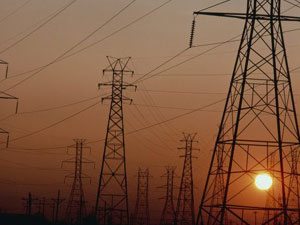
[miningmx.com] – THE six-month delay in the commissioning of the first Medupi unit is weighing heavily on state-owned power utility, Eskom, which today called on heavy industrial users to cut consumption at least 10% – a development that one analyst said was temporary but underpinned deep structural problems in South Africa’s power system.
“This may seem like a a glitch, something temporary,” said Peter Attard Montalto, an analyst for Nomura International, the Asian financial services group. “[A]s we move through H1 next year out of winter and businesses return from Christmas so we will see new spikes in demand and the chances of load-shedding will be more meaningful.
“This is a deep structural issue due to the underinvestment by South Africa in infrastructure,” said Attard Montalto.
Eskom said earlier today that owing to a “severely constrained” power system, it was necessary to declare an emergency in terms of the “approved regulatory protocols”.
This allows it to ask heavy industrial users to cut power 10%, especially the power-hungry aluminium smelters owned by BHP Billiton and ferrochrome smelters owned by GlencoreXstrata.
The emergency protocols are evocative of the weeks and months following the power blackout in January 2008 in which South Africa’s mines were shut for a week.
“We have alerted our key industrial customers and have required them to reduce their load by a minimum of 10%,” said Eskom. It added that it was hopeful of avoiding load-shedding; however, it would publish load-shedding schedules anyway.
The Chamber of Mines of South Africa (CoM) told Bloomberg News that it had been working with Eskom on the emergency protocol for the past three months.
“It isn’t the responsibility of the large industrial customers alone to carry the full burden of the electricity-supply emergency,’ the CoM told Bloomberg News. “This is a “national emergency’ and all stakeholders have a responsibility to curtail electricity demand by at least 10%,’ the CoM said.
The loss of generating capacity is partly owing to maintenance of units across Eskom’s fleet, the downtime of one of nuclear installation Koeberg’s units, and a leak at one of the six generating units of the 3,600MW Duvha power station which led to a 600MW unit to be shut for repairs.
“It should take a few hours, and by 10pm would to be fixed,’ he said. “At most, it takes two days to fix a broken pipe of the kind,” Eskom spokesman Andrew Etzinger told BDLive. The Duvha power station, with six units of 600MW each, fully came into service in 1984, the online publication said.
Fears that economic growth, however slight in 2014, could trigger more load-shedding threats was real, said Attard Montalto.
The problem may have been ameliorated if Eskom had been able to commission the first unit of its 4,650MW Medupi power project in December – the latest deadline set for the R105bn installation until it was pushed back at least half a year owing to contractor delays on welding, control and instrumentation as well as labour problems.









